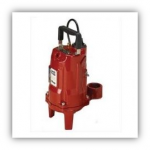The Ultimate Guide to Selecting the Right Dewatering Pump
Dewatering pumps are essential for places that have a problem with water accommodation. These pumps are usually portable and can help in removing and successfully extracting excess water. However, in order to get the best dewatering pump, always understand the application.
If you are tired of finding so many options but are confused about which one to buy, read this guide. We promise that after reading this, you can gain clarity on selecting the right dewatering pump.
What is a Dewatering Pump?
As the name suggests, dewatering pumps are designed to remove water from a place. It comes in various sizes to suit multiple applications and comes with an impeller or suction that removes the water.Dewatering pumpsare very common in construction, mining, and environmental projects and help in effectively removing water.
These pumps assist in maintaining dry conditions by preventing water logging. Using these pumps provides safe working conditions and prevents structural damage in buildings.
Types of Dewatering Pumps
Submersible Pumps: These types of pumps are usually submerged underwater and are popularly used in construction sites.Submersible pumps come in various sizes and capacities to suit various applications.
Centrifugal Pumps: These pumps use a rotating impeller to convert kinetic energy into pressure. This pressure is used to remove water from construction sites or wastewater management industries.
Diaphragm Pumps: Most commonly used in the mining industry, these pumps rely on a flexible diaphragm to remove water. The vacuum created by this can handle abrasive materials.
Key Factors to Consider When Selecting a Dewatering Pump
Application and Purpose
Some projects require a pump with vacuum suction, while others need to draw water away from the location. Due to this various types ofdewatering pumps are needed depending on the tasks like construction sites, mining, or flooding.
Flow Rate
To buy the perfect dewatering pump, you must calculate your daily pumping requirements and match them with the pump. To calculate the flow rate of water per minute or liters per second, follow this formula-
Flow Rate = Volume of liquid collected / Time taken
Or
Flow Rate = Pump Speed* Impeller Size* Fluid Density
Total Dynamic Head (TDH)
Total dynamic head means the amount of pressure a pump can withstand in order to remove the liquid. This can hamper the pump performance as thigh TDH can cause material buildup within the pump and cause motor failure.
Solid Handling Capability
Not every pump has a system to release small particles or debris during water pumping. If slurry is involved, diaphragm pumps work best to deal with abrasive materials.
Portability
Some areas of application can benefit from a stable pump, whereas some require a portable pump. Consider the application and frequency of removing water in a location while buying a dewatering pump.
Durability and Build Quality
Always pay keen attention to the built quality and material used in the pump. This can help in sustaining its usage for the long term and during a harsh environment.
Power Source
If you have constant access to uninterrupted electricity, choose an electric-powered pump. However, if you live in a rural area with fewer facilities, diesel-powered pumps work best.
Understanding Pump Curves
A pump chart can help you in selecting a pump that matches your performance requirements. This chart contains information about the pump’s flow rate, capacity, power consumption, and efficiency. On the X and Y axis, you will find four main pieces of information that will help you read this graph. These are flow rate, power consumption, total dynamic head, and net positive suction head requirements.
Common Mistakes to Avoid When Choosing a Dewatering Pump
Never buy a pump without considering the environmental conditions or specific application. For example, if a farmer living in a cold climate gets a pump with less capacity, the motor can be jammed. Always buy a pump that is energy-efficient and accurate for your daily requirements. This can help you to avoid expensive electricity bills. Another important thing to consider is if the water you are moving has any abrasive materials.
Maintenance and Troubleshooting Tips
To ensure the dewatering pumps are working for a longer duration, you can follow these tips:
- Store the pump properly and assemble the components accordingly.
- Lubricate the components regularly using industry-grade oils and lubes.
- Keep the pump clean of any stones, debris, or dirt to avoid overheating and reduced flow.
- Check all gaskets and see if there is any oil leak to avoid loose components causing noise.
- Allow the pump to complete a single flow cycle and avoid constantly turning it on and off.
Conclusion
In order to invest your money in a high-quality dewatering pump, always ensure it’s of the right size, application, and capacity. You must also check the built quality, power requirements, and maintenance. Experts advise that the dewatering pump must be suited to your task. This is because dewatering pumps are created for specialized tasks.
Check the technical aspects and additional features like portability, remote monitors, and automatic operation. It is best to consult professionals likePumpProducts for large-scale project requirements.













